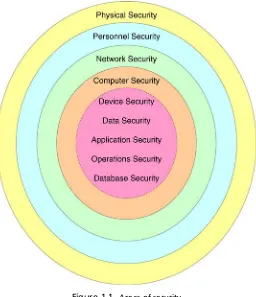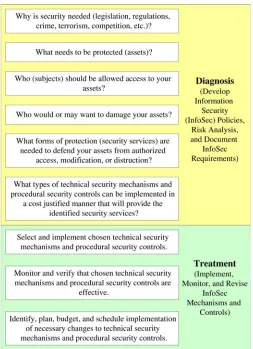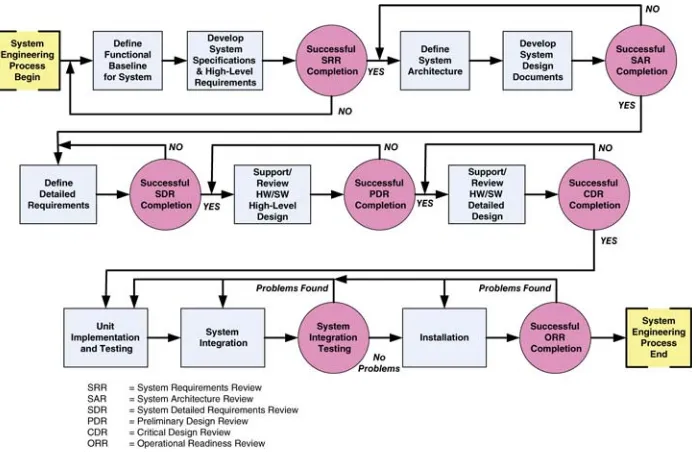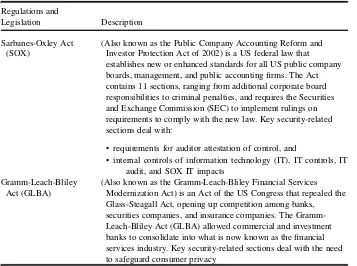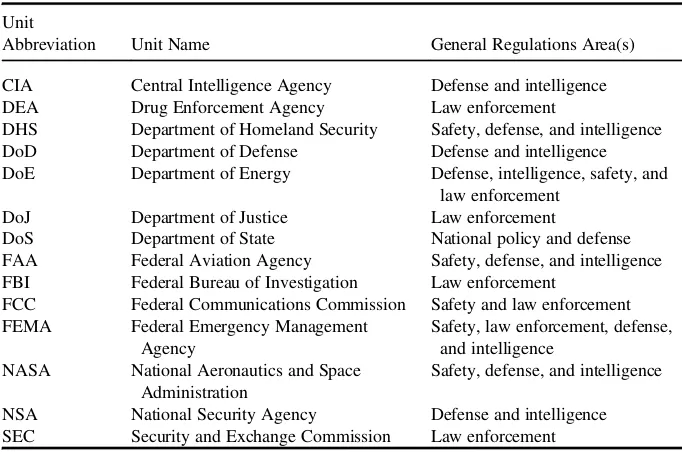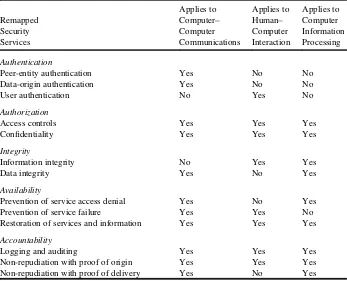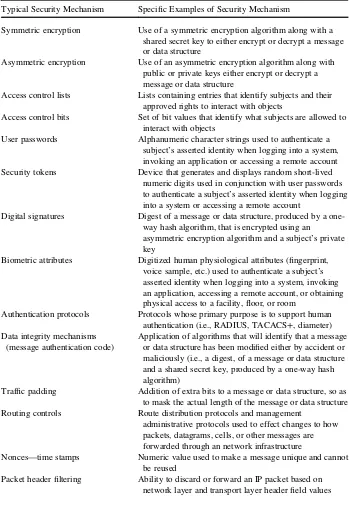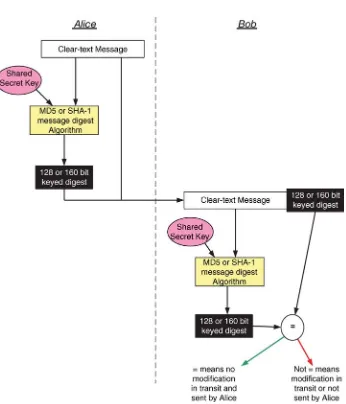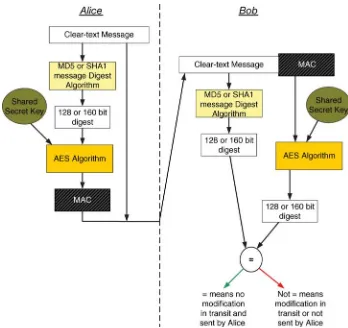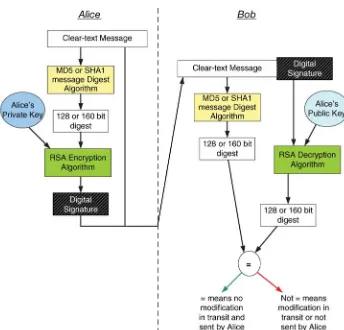IEEE Press 445 Hoes Lane Piscataway, NJ 08854 IEEE Press Editorial Board
Tariq Samad,Editor in Chief
George W. Arnold Vladimir Lumelsky Linda Shafer
Dmitry Goldgof Pui-In Mak Zidong Wang
ENGINEERING
INFORMATION
SECURITY
The Application of
Systems Engineering
Concepts to Achieve
Information Assurance
SECOND EDITION
Copyright2016 by The Institute of Electrical and Electronics Engineers, Inc. Published by John Wiley & Sons, Inc., Hoboken, New Jersey. All rights reserved Published simultaneously in Canada
No part of this publication may be reproduced, stored in a retrieval system, or transmitted in any form or by any means, electronic, mechanical, photocopying, recording, scanning, or otherwise, except as permitted under Section 107 or 108 of the 1976 United States Copyright Act, without either the prior written permission of the Publisher, or authorization through payment of the appropriate per-copy fee to the Copyright Clearance Center, Inc., 222 Rosewood Drive, Danvers, MA 01923, (978) 750-8400, fax (978) 750-4470, or on the web atwww.copyright.com. Requests to the Publisher for permission should be addressed to the Permissions Department, John Wiley & Sons, Inc., 111 River Street, Hoboken, NJ 07030, (201) 6011, fax (201) 748-6008, or online athttp://www.wiley.com/go/permission.
Limit of Liability/Disclaimer of Warranty: While the publisher and author have used their best efforts in preparing this book, they make no representations or warranties with respect to the accuracy or completeness of the contents of this book and specifically disclaim any implied warranties of merchantability orfitness for a particular purpose. No warranty may be created or extended by sales representatives or written sales materials. The advice and strategies contained herein may not be suitable for your situation. You should consult with a professional where appropriate. Neither the publisher nor author shall be liable for any loss of profit or any other commercial damages, including but not limited to special, incidental, consequential, or other damages.
For general information on our other products and services or for technical support, please contact our Customer Care Department within the United States at (800) 762-2974, outside the United States at (317) 572-3993 or fax (317) 572-4002.
Wiley also publishes its books in a variety of electronic formats. Some content that appears in print may not be available in electronic formats. For more information about Wiley products, visit our web site atwww.wiley. com.
Library of Congress Cataloging-in-Publication Data: Jacobs, Stuart.
Engineering information security: The application of systems engineering concepts to achieve information assurance/Stuart Jacobs.
p. cm.
ISBN 978-1-119-10160-4 (hardback)
1. Computer security. 2. Computer networks–Security measures. 3. measures. 4. Data protection. I. Title.
QA76.9.A25J325 2010 005.8–dc22
Information technology–Security
2010028408
Printed in United States of America
This book is dedicated to my wife, Eileen,
CONTENTS
Preface and Acknowledgments xxiii
About the Companion Website xxvii
1
WHAT IS SECURITY? 11.1 Introduction 1
1.2 The Subject of Security 2
1.2.1 Branches of Security 2
1.2.2 Defining Security by Function 5
1.2.2.1 Risk Avoidance 5
1.2.2.2 Deterrence 5
1.2.2.3 Prevention 6
1.2.2.4 Detection 7
1.2.2.5 Recovery 7
1.2.3 The Common Body of Knowledge (CBK) Security Domains 8
1.2.3.1 Access Control Systems and Methodology 8
1.2.3.2 Application and Systems Development Security 9 1.2.3.3 Business Continuity Planning and Disaster
Recovery Planning 10
1.2.3.4 Cryptography 10
1.2.3.5 Information Security and Risk Management 11
1.2.3.6 Legal, Regulations, Compliance, and Investigations 11
1.2.3.7 Operations Security 12
1.2.3.8 Physical Security 13
1.2.3.9 Security Architecture and Models 14
1.2.3.10 Telecommunications and Network Security 14
1.2.3.11 CBK Summary 15
1.3 A Twenty-First Century Tale 15
1.3.1 The Actors 15
1.3.1.1 Bob’s Story 15
viii C O N T E N T S
1.3.1.2 Carol’s Story 16
1.3.1.3 Alice’s Story 17
1.3.2 What Actually Occurred 17
1.3.3 How Could All This Have Been Prevented? 19
1.3.4 They Did Not Live Happily Ever After 20
1.4 Why Are You Important to Computer Security? 21
1.4.1 What Are the Threats to Your Computer? 22
1.4.2 As a User, What to Do? 23
1.4.3 The Reality of Cybercrime and Cyberwarfare 23
1.5 End of the Beginning 25
1.6 Chapter Summary 29
1.7 Further Reading and Resources 30
2
SYSTEMS ENGINEERING 312.1 So What Is Systems Engineering? 31
2.1.1 Similar Systems Engineering Process 32
2.1.1.1 Stating the Problem 34
2.1.1.2 Investigate Alternatives and Model the System 35
2.1.1.3 Develop/Integrate 36
2.1.1.4 Launch the System 37
2.1.1.5 Assess Performance 38
2.1.1.6 Re-evaluate 38
2.1.2 Another Systems Engineering View 38
2.1.3 Process Variations 41
2.2 Process Management 41
2.2.1 ISO 9000 Processes and Procedures 41
2.2.2 Capability Maturity Model (CMM) 43
2.3 Organization Environments 46
2.3.1 Economic, Legal, and Political Contexts 47
2.3.1.1 Regulations/Legislation 47
2.3.1.2 Market-Based Regulations 49
2.3.1.3 Technology Evolution 51
2.3.1.4 Customer Demands and Expectations 51
2.3.1.5 Legal Liability 51
2.3.1.6 Competition 51
2.3.1.7 Terrorism and Cybercrime 52
2.3.2 Business/Organizational Types 52
C O N T E N T S ix
2.3.2.2 Residential 54
2.3.2.3 Governments 54
2.3.2.4 Nongovernmental Organizations (NGOs) 56
2.3.3 National Critical Infrastructure 56
2.4 Chapter Summary 59
2.5 Further Reading and Resources 59
3
FOUNDATION CONCEPTS 613.1 Security Concepts and Goals 62
3.1.1 Subjects and Objects 63
3.1.2 What Is Trust? 63
3.1.3 Domains, Security, and Trust 64
3.1.4 Security Goals/Objectives 65
3.1.5 X.800 Security Services 66
3.1.5.1 Authentication 67
3.1.5.2 Access Control 67
3.1.5.3 Confidentiality 67
3.1.5.4 Data Integrity 68
3.1.5.5 Non-Repudiation 69
3.1.6 A Modern Definition of Security Services 69
3.1.6.1 Authentication 69
3.1.6.2 Authorization-Access Control 69
3.1.6.3 Integrity 70
3.1.6.4 Availability 71
3.1.6.5 Accountability 73
3.1.6.6 Privacy As a Security Service 74
3.1.6.7 Service Mapping and Application of Services 74
3.2 Role of Cryptography in Information Security 77
3.2.1 Cryptographic Hash Algorithms 81
3.2.1.1 HMAC-MD5 and HMAC-SHA1 85
3.2.2 Encryption Algorithms 86
3.2.2.1 Symmetric Encryption 86
3.2.2.2 Asymmetric Encryption 93
3.2.2.3 Encryption Algorithm Performance 95
3.2.3 Cryptanalysis and Other Key Issues 101
3.2.3.1 Cryptanalysis 101
x C O N T E N T S
3.2.3.3 Key Protection 106
3.2.3.4 Using Passwords with Cryptography 107
3.2.3.5 Using Passphrases with Cryptography 108
3.2.4 Key Management 108
3.2.4.1 Diffie–Hellmann Key Distribution 110
3.2.5 Cryptographic Authentication 112
3.2.5.1 Challenge–Response Technique 113
3.2.5.2 Message Authentication Code Technique 116
3.2.5.3 Digital Signature Authentication Technique 119
3.3 Key Management Revisited 120
3.4 Chapter Summary 121
3.5 Further Reading and Resources 122
4
AUTHENTICATION OF SUBJECTS 1234.1 Authentication Systems 123
4.1.1 Kerberos-Based Authentication 124
4.1.2 Public-Key Infrastructure 128
4.1.2.1 X.509 Digital Certificates 128
4.1.2.2 Certificate Authority Hierarchies 131
4.1.2.3 Certificate Generation Requests 136
4.1.2.4 PKI Component Deployment 139
4.1.2.5 Digital Certificate Revocation and
Status Verification 141
4.1.2.6 Certificate Verification 143
4.1.3 Remote Authentication Dial-in User Service and EAP 144
4.1.4 Diameter 149
4.1.5 Secure Electronic Transactions (SET) 150
4.1.6 Authentication Systems Summary 154
4.2 Human Authentication 154
4.2.1 What the Subject Has Factor 155
4.2.2 What the Subject Knows Factor 155
4.2.3 What the Subject Is Factor 156
4.2.4 Where the Subject Is Factor 157
4.2.5 Combinations of Factors 157
4.2.6 Rainbow Tables 158
4.2.7 Proxies for Humans 159
C O N T E N T S xi
4.2.7.2 User Agents 159
4.2.7.3 Single Sign-On (SSO) 159
4.2.7.4 Shibboleth SSO Authentication 164
4.2.7.5 Identity Management (IdM) 164
4.3 Chapter Summary 167
4.4 Further Reading and Resources 168
5
SECURITY SYSTEMS ENGINEERING 1695.1 Security Policy Development 170
5.2 Senior Management Oversight and Involvement 170
5.3 Security Process Management and Standards 170
5.3.1 ISO 27002 172
5.3.1.1 Establishing Organizational Security Policy
(Section 5) 172
5.3.1.2 Organizational Security Infrastructure (Section 6) 173 5.3.1.3 Asset Classification and Control (Section 7) 175
5.3.1.4 Personnel Security (Section 8) 176
5.3.1.5 Physical and Environmental Security (Section 9) 178 5.3.1.6 Communications and Operations Management
(Section 10) 179
5.3.1.7 Access Controls (Section 11) 180
5.3.1.8 Information Systems Acquisition, Development,
and Maintenance (Section 12) 181
5.3.1.9 Information Security Incident Management
(Section 13) 182
5.3.1.10 Business Continuity Management (Section 14) 182
5.3.1.11 Compliance (Section 15) 183
5.3.1.12 ISO 27002 Summary 185
5.3.2 ISO 27001 185
5.3.3 Policy Hierarchy 186
5.3.4 An Enterprise Security Policy Example 189
5.3.5 COBIT 189
5.3.6 Information Technology Infrastructure Library 194
5.3.7 Federal Information Security Management Act (FISMA) 196
5.4 Information Security Systems Engineering Methodology 199
5.4.1 Existing Asset Inventory and Classification 201
5.4.1.1 Physical Assets 201
xii C O N T E N T S
5.4.1.3 Conceptual Assets 202
5.4.2 Vulnerabilities, Threats, and Risk 203
5.4.2.1 Asset Vulnerabilities 204
5.4.2.2 Organization Threat Profile(s) 204
5.4.3 Dealing with Risk 224
5.4.3.1 ITU-T View of Risk Mitigation Approach 224
5.4.3.2 STRIDE Mitigation Approach 226
5.4.3.3 ISO 27005 Approach to Managing Risk 226
5.4.3.4 Common Criteria (CC) Mitigation Approach 227 5.4.3.5 ETSI Security-Related Vulnerability and
Threat Analysis Efforts 230
5.4.4 Risk Management Framework 232
5.4.4.1 Impact Analysis 233
5.4.4.2 Risk Assessment Analysis 234
5.4.4.3 Risk Assessment—Asset Definition and
Inventorying 236
5.4.4.4 Risk Assessment–Threats 237
5.4.5 Risk Assignment 240
5.5 Requirements Analysis and Decomposition 240
5.6 Access Control Concepts 244
5.6.1 Subjects, Objects, and Access Operations 245
5.6.2 Mandatory Access Control using a Matrix or
Lattice Approach 246
5.6.3 Discretionary Access Control using an Access
Control List Approach 246
5.6.4 Mandatory Access Control using a Capability List Approach 247
5.6.5 Administrative Tasks in Access Control Methods 248
5.6.5.1 Groups and Permissions 248
5.6.5.2 Protection Rings 249
5.6.6 Role-Based Access Control (RBAC) 249
5.7 Security Modeling and Security-Related Standards 251
5.7.1 Confidentiality Policies and Integrity Policies 252
5.7.2 Bell–LaPadula Model 253
5.7.3 Graham–Denning Confidentiality Model 254
5.7.4 Chinese Wall Multilateral Confidentiality Model 255
5.7.5 Biba Integrity Model 256
5.7.6 Clark–Wilson Model 256
5.7.7 Security Model Summary 258
C O N T E N T S xiii
5.7.8.1 Public-Key Cryptography Standards 260
5.7.8.2 Third-Generation Partnership Project 260
5.7.8.3 Third-Generation Partnership Project 2 260
5.7.8.4 Alliance for Telecommunications Industry Solutions 262
5.7.8.5 Cable Television Laboratories, Inc. 262
5.7.8.6 European Telecommunications Standards Institute 263 5.7.8.7 International Organization for Standardization 263 5.7.8.8 ITU Telecommunication Standardization Sector 263
5.7.8.9 Internet Engineering Task Force 264
5.7.8.10 Object Management Group 264
5.7.8.11 Organization for the Advancement of Structured
Information Standards 264
5.7.8.12 Parlay Group 265
5.7.8.13 TeleManagement Forum 265
5.7.8.14 World Wide Web Consortium 265
5.8 Chapter Summary 265
5.8.1 Things to Remember 266
5.8.1.1 Subjects and Objects 266
5.8.1.2 Mandatory Access Controls 267
5.8.1.3 Discretionary Access Controls 267
6
TRADITIONAL NETWORK CONCEPTS 2696.1 Networking Architectures 269
6.1.1 OSI Network Model 270
6.1.2 Internet Network Model 272
6.2 Types of Networks 274
6.2.1 Local Area Network (LAN) 274
6.2.2 Wireless LAN (WLAN) 277
6.2.3 Metropolitan Area Networks (MAN) 277
6.2.4 Wide Area Networks (WAN) 278
6.2.5 The Internet 279
6.2.6 Circuit Switched Networks 279
6.2.7 Supervisory Control and Data Acquisition (SCADA) Systems 284
6.2.8 Sensor Networks 288
6.2.9 Clouds 289
6.2.9.1 Hardware as a Service 290
xiv C O N T E N T S
6.2.9.3 Applications as a Service 292
6.2.9.4 Public versus Private Clouds 293
6.2.10 Cellular Networks 294
6.2.11 IEEE 802.16 Networks 295
6.2.12 Long-Term Evolution Networks 295
6.3 Network Protocols 295
6.3.1 Layer 1—Physical 296
6.3.2 Layer 2—Data Link Protocols 296
6.3.2.1 Ethernet 297
6.3.2.2 Virtual Ethernets 299
6.3.2.3 Wireless Networking 300
6.3.2.4 MultiProtocol Label Switching 301
6.3.2.5 Asynchronous Transfer Mode and Frame Relay 304
6.3.2.6 Digital Subscriber Lines 304
6.3.2.7 Optical Networking 305
6.3.2.8 Security in Data Link Layer Protocols 310
6.3.3 Layer 3—Internetworking Layer Protocols 310
6.3.3.1 Address Resolution Protocol 310
6.3.3.2 IP Version 4 320
6.3.3.3 Internet Control Management Protocol 325
6.3.3.4 IPv4 Fragmentation and Related Attacks 327
6.3.3.5 IP Version 6 329
6.3.3.6 Security in Internetworking Layer Protocols 332
6.3.4 Layer 4—Transport 332
6.3.4.1 Transmission Control Protocol 334
6.3.4.2 User Datagram Protocol 338
6.3.4.3 Stream Control Transmission Protocol 339
6.3.4.4 Open Shortest Path First 340
6.3.4.5 Security in Transport Layer Protocols 342
6.3.5 Layer 5—User Application Protocols 342
6.3.5.1 Initial Internet User Application Protocols 344
6.3.5.2 HyperText Transfer Protocol 344
6.3.5.3 X Windows 346
6.3.5.4 eXtensible Markup Language 348
6.3.5.5 Security in User Application Protocols 349
6.3.6 Layer 5—Signaling and Control Application Protocols 349
6.3.6.1 MPLS Signaling Protocols 351
C O N T E N T S xv
6.3.6.3 Mobile IP Routing 352
6.3.6.4 Dynamic Host Configuration Protocol 355
6.3.6.5 Network Time Protocols 359
6.3.6.6 Domain Name System 359
6.3.6.7 Lightweight Directory Access Protocol 361
6.3.6.8 Active Directory 362
6.3.6.9 Security in Signaling and Control Application
Protocols 363
6.3.7 Layer 5—Management Application Protocols 363
6.3.7.1 Simple Network Management Protocol 363
6.3.7.2 Customer Premise Equipment WAN Management
Protocol 367
6.3.7.3 Remote Monitoring 368
6.3.7.4 Security in Management Application Protocols 368
6.4 Chapter Summary 368
6.5 Further Reading and Resources 370
7
NEXT-GENERATION NETWORKS 3717.1 Framework and Topology of the NGN 372
7.1.1 Functional Entities and Groups 372
7.1.2 Domains 373
7.1.2.1 Customer Domain 374
7.1.2.2 SP Access Domain 374
7.1.2.3 SP Core/Services Domain 374
7.1.3 Interfaces 374
7.1.4 Protocol Layers, Functional Planes, and Interfaces 376
7.2 The NGN Functional Reference Model 380
7.2.1 Strata 380
7.2.2 Management Functional Group 381
7.2.3 Application Functional Group 381
7.2.4 The Transport Stratum 381
7.2.5 The Service Stratum 385
7.2.6 The Service Stratum and the IP Multimedia
Subsystem (IMS) 385
7.3 Relationship Between NGN Transport and Service Domains 389
7.4 Enterprise Role Model 390
xvi C O N T E N T S
7.6 Converged Network Management (TMN and eTOM) 393
7.7 General Network Security Architectures 401
7.7.1 The ITU-T X.800 Generic Architecture 402
7.7.2 The Security Frameworks (X.810–X.816) 402
7.7.3 The ITU-T X.805 Approach to Security 403
7.8 Chapter Summary 405
7.9 Further Reading and Resources 405
8
GENERAL COMPUTER SECURITY ARCHITECTURE 4098.1 The Hardware Protects the Software 410
8.1.1 Processor States and Status 411
8.1.1.1 Protection on the Motorola 68000 411
8.1.1.2 Protection on the Intel 80386/80486 412
8.1.2 Memory Management 412
8.1.2.1 Fence 413
8.1.2.2 Relocation 413
8.1.2.3 Base/Bounds Registers 414
8.1.2.4 Segmentation 416
8.1.2.5 Paging 418
8.1.2.6 Combining Segmentation and Paging
(Virtual Memory) 419
8.1.3 Interruption of Processor Activity 420
8.1.4 Hardware Encryption 421
8.1.4.1 Hardware Security Modules 421
8.1.4.2 Hardware Acceleration Cards 422
8.1.4.3 Hardware Acceleration USB Devices 422
8.1.4.4 Smartcards 423
8.2 The Software Protects Information 424
8.3 Element Security Architecture Description 426
8.3.1 The Kernel 429
8.3.2 Security Contexts 430
8.3.3 Security-Critical Functions 432
8.3.3.1 Security Policy Decision Function (SPDF) 432
8.3.3.2 Authentication Function 433
8.3.3.3 Audit Function 433
C O N T E N T S xvii
8.3.3.5 Device Management Functions and
Device Controllers 434
8.3.4 Security-Related Functions 435
8.4 Operating System (OS) Structure 435
8.4.1 Security Management Function 437
8.4.2 Networking Subsystem Function 437
8.5 Security Mechanisms for Deployed Operating Systems (OSs) 437
8.5.1 General Purpose (GP) OSs 438
8.5.1.1 Hardware Mechanisms for GP OS Usage 438
8.5.1.2 Software Functional Entities for General
Purpose (GP) OS Contexts 438
8.5.2 Minimized General Purpose Operating Systems 438
8.5.2.1 Hardware Mechanisms for Minimized
GP OS Usage 449
8.5.2.2 Software Mechanisms for Minimized
GP OS Usage 449
8.5.3 Embedded (“Real-Time”) Operating Systems 449
8.5.3.1 Hardware Mechanisms for Embedded OS Usage 449 8.5.3.2 Software Mechanisms for Embedded OS Usage 451
8.5.4 Basic Input–Output Systems (BIOS) 451
8.5.4.1 Hardware Mechanisms for BIOS Usage 451
8.5.4.2 Software Mechanisms for BIOS Usage 451
8.6 Chapter Summary 456
8.7 Further Reading and Resources 460
9
COMPUTER SOFTWARE SECURITY 4619.1 Specific Operating Systems (OSs) 461
9.1.1 Unix and Linux Security 462
9.1.1.1 Login and User Accounts 462
9.1.1.2 Group Accounts 463
9.1.1.3 Set User ID (setuid) and Set Group ID (setgid) 463
9.1.1.4 Access Control 464
9.1.1.5 Audit Logs and Intrusion Detection 467
9.1.1.6 inetd and TCP Wrappers 469
9.1.1.7 Log Files and Unix Disk Partitions 470
9.1.2 Solaris Operating System and Role-Based Access Controls 473
xviii C O N T E N T S
9.1.3.1 Users and Groups 477
9.1.3.2 Access Control Model 478
9.1.3.3 Access Tokens 478
9.1.3.4 Access Control Lists 479
9.1.3.5 Access Control Entries 481
9.1.3.6 Access Rights and Access Masks 481
9.1.3.7 Security Identifiers 481
9.1.3.8 The Registry 482
9.1.3.9 Domains and Trust Relationships 485
9.1.3.10 Active Directory 487
9.1.3.11 More on Trust Relationships 489
9.1.3.12 Identification and Authentication 492
9.1.3.13 Windows Server 2003—Role-Based Access
Control (RBAC) 493
9.1.4 Embedded OSs 496
9.2 Applications 498
9.2.1 Application Security Issues 498
9.2.1.1 Buffer Overflows 499
9.2.1.2 Exception Handling, Bounds Checking, and
Shared Libraries 500
9.2.1.3 Shared Libraries 500
9.2.1.4 Application Development Security 501
9.2.1.5 Static Code Security Analysis 502
9.2.1.6 Dynamic Code Security Analysis 503
9.2.2 Malicious Software (Malware) 503
9.2.2.1 Viruses 505
9.2.2.2 Worms 507
9.2.2.3 Trojan Horses, Rootkits, and Backdoors 507
9.2.2.4 Spyware and Botnets 510
9.2.2.5 Linux, Unix, and Mac OS X Malware 512
9.2.3 Anti-malware Applications 512
9.2.3.1 Malware and Spyware Scanners 512
9.2.3.2 Host-Based Firewalls 513
9.2.3.3 Modification Scanners 514
9.2.3.4 Host-Based Intrusion Detection 515
9.3 Chapter Summary 515
C O N T E N T S xix
10
SECURITY SYSTEMS DESIGN—DESIGNING NETWORK SECURITY 51710.1 Introduction 517
10.2 Security Design for Protocol Layer 1 520
10.2.1 Wired and Optical Media 520
10.2.1.1 Link-Bulk Encryption 520
10.2.1.2 Dial-back Modems 522
10.2.2 Wireless Media 522
10.2.2.1 Fast Frequency Hopping 523
10.3 Layer 2—Data Link Security Mechanisms 524
10.3.1 IEEE 802.1x 524
10.3.2 IEEE 802.1ae 525
10.3.3 IEEE 802.11 WPA and 802.11i 528
10.4 Security Design for Protocol Layer 3 530
10.4.1 IP Security (IPsec) 530
10.4.1.1 IPsec Architecture 531
10.4.1.2 IPsec Key Management and Key Exchange 536
10.4.1.3 IKE Operation 537
10.4.1.4 IPsec Security Associations (SAs) 541
10.4.1.5 Combining Security Associations 542
10.4.1.6 IPsec Authentication Header (AH) Transform 544 10.4.1.7 The IPsec Encapsulating Security Payload (ESP)
Transform 545
10.4.1.8 The Various ESP Transforms 545
10.4.1.9 IPsec Processing 545
10.4.1.10 IPsec Policy Management 547
10.4.1.11 IPsec and Network Address Translation 549
10.4.1.12 IPsec Implementation Availability 554
10.4.1.13 IPsec and Fault-Tolerant Network Designs 554
10.4.1.14 IPsec and PKI 556
10.4.1.15 IPsec Summary and Observations 557
10.5 IP Packet Authorization and Access Control 558
10.5.1 Network and Host Packet Filtering 559
10.5.2 The Demilitarized Zone 563
10.5.3 Application-Level Gateways 564
10.5.4 Deep-Packet Inspection (DPI) 567
10.6 Chapter Summary 571
xx C O N T E N T S
11
TRANSPORT AND APPLICATION SECURITY DESIGN AND USE 57311.1 Layer 4—Transport Security Protocols 573
11.1.1 TLS, DTLS, and SSL 574
11.1.1.1 TLS Session Establishment 576
11.1.1.2 TLS Operational Activities 579
11.1.1.3 TLS and SSL Security Items 579
11.1.1.4 SSL Virtual Private Networks 579
11.1.2 Secure Shell (SSH) 581
11.1.3 Comparison of SSL, TLS, DTLS, and IPsec 581
11.2 Layer 5—User Service Application Protocols 582
11.2.1 Email 583
11.2.1.1 Pretty Good Privacy (PGP) 583
11.2.1.2 Secure/Multipurpose Internet Mail Extensions
(S/MIME) 586
11.2.1.3 S/MIME and OpenPGP Differences 587
11.2.1.4 Email Attacks 587
11.2.2 World Wide Web (Web) and Identity Management 589
11.2.2.1 eXtensible Markup Language Security (XML) 589
11.2.2.2 Service-Oriented Architecture (SOA) 590
11.2.2.3 Web Services 593
11.2.2.4 SOAP 593
11.2.2.5 Security Assertion Markup Language (SAML) 594
11.2.3 Voice over Internet Protocol (VoIP) 596
11.2.3.1 VoIP Signaling Security 599
11.2.3.2 Real-Time Protocol 599
11.2.3.3 VoIP Media Security 601
11.2.3.4 VoIP Session Border Control 602
11.2.3.5 VoIP Device Security 602
11.2.3.6 VoIP and NAT 604
11.2.4 DNS Security Extensions 605
11.2.5 Instant Messaging and Chat 608
11.2.6 Peer-to-Peer Applications 615
11.2.7 Ad hoc Networks 616
11.2.8 Java 618
11.2.8.1 Basic Concepts 619
11.2.8.2 Java 2 Cryptographic Architecture 620
C O N T E N T S xxi
11.2.9.1 Role-Based Security 622
11.2.9.2 Web Application Security 622
11.2.9.3 Evidence-Based Security 622
11.2.9.4 Cryptography Available in .NET 623
11.2.9.5 Security Policy Administration in .NET 623
11.2.10 Common Object Request Broker Architecture (CORBA) 624
11.2.11 Distributed Computing Environment 626
11.2.12 Dynamic Host Configuration Protocol Security 630
11.3 Chapter Summary 632
11.4 Further Reading and Resources 632
12
SECURING MANAGEMENT AND MANAGING SECURITY 63312.1 Securing Management Applications 633
12.1.1 Management Roots 633
12.1.2 The Telecommunications Management Network 634
12.1.2.1 Telecommunications Management Network
Structure 635
12.1.2.2 Element, Network Management Systems, and
Operations Systems 636
12.1.3 TMN Security 640
12.1.4 Management of Security Mechanisms 642
12.1.4.1 EMS Security Needs 643
12.1.4.2 NMS Security Additions 644
12.1.4.3 Selected OSS/EMS Security Services 644
12.1.5 A Security Management Framework 645
12.2 Operation, Administration, Maintenance, and Decommissioning 648
12.2.1 Operational Security Mechanisms 649
12.2.1.1 Separation of Duties and Roles 649
12.2.1.2 Operational Guidelines and Procedures 650
12.2.1.3 Independent Auditing and Review 651
12.2.1.4 Human Resources and Legal Aspects 653
12.2.1.5 Accountability 653
12.2.1.6 Documentation 653
12.2.1.7 Acceptance Testing, Field Testing, and
Operational Readiness 653
12.2.2 Operations Security 654
12.2.2.1 Third-Party Access 655
xxii C O N T E N T S
12.2.2.3 Senior Security Management Mechanisms 657
12.2.2.4 Operational Reviews 657
12.2.2.5 Accreditation and Certification 658
12.2.2.6 Life-cycle Review 661
12.2.2.7 Withdrawal from Service 661
12.2.3 Operations Compliance 664
12.2.3.1 Example Security Tools 667
12.2.3.2 Penetration Testing 669
12.3 Systems Implementation or Procurement 671
12.3.1 Development 672
12.3.1.1 CMMI and ISO-9001 Processes 672
12.3.1.2 Coding 672
12.3.1.3 Testing 673
12.3.2 Procurement 673
12.3.2.1 Requests for Information/Proposals (RFIs/RFPs) 673
12.3.2.2 Standards Compliance 679
12.3.2.3 Acceptance Testing and Review 681
12.3.3 Forensic Tools 681
12.4 Chapter Summary 681
12.5 Further Reading and Resources 681
About the Author 683
Glossary 685
PREFACE AND
ACKNOWLEDGMENTS
APPROACH
This book focuses on information security (information assurance) from the viewpoint of how to control access to information in a systematic manner. Many books on security primarily cover specific security mechanisms such as authentication protocols, encryp-tion algorithms, and security-related protocols. Other books on security are use case oriented, providing specific contexts for discussing vulnerabilities, threats, and counter-measures. Few books on security consider the planning, operations, and management aspects of protecting information. Unlike these other books that focus on security mechanisms, threats, and vulnerabilities, this book presents a methodology for address-ing security concerns in any organization. The methodology is based on a set of concepts called systems engineering that are designed to methodologically examine, analyze, and document objectives and the functional and performance capabilities (requirements) that need to exist to achieve the stated goals. Systems engineering concepts provide:
• a framework for developing capabilities and solutions that ensure compliance with the aforementioned requirements;
• traceability starting at objectives, progressing through requirements development, solution design/development/procurement into, and during, operation and admin-istration; and
• support for compliance evaluation of deployed systems and how these systems are used.
Another critical aspect of the systems methodology is the necessity to consider all aspects of a system, not just the technical components. All information processing infrastructures (networks and computing devices) exist within a context defined by:
• how the deploying organization operates,
• what the deploying organization provides as services or products, • who competes with the deploying organization,
• what legal and regulatory burdens the deploying organization has to accommo-date, and
xxiv P R E F A C E A N D A C K N O W L E D G M E N T S
• who may target the deploying organization with the intent of personal orfinancial gain, political advantage, or ideological objectives.
Over time the technologies used for the processing, storage, and communicating of information have changed dramatically and rapidly. By presenting a systems engineering approach to information security, this book will assist security practitioners to cope with these rapid changes. Achieving information security is not a matter of dealing with specific technologies, rather information security is a process of managing technologies to ensure that information is only accessible to valid users.
ORGANIZATION
The coverage of information security by this book includes all aspects of security in a systematic engineering approach:
• Chapter 1 considers why information security is needed, how security problems can have widespread impacts, and what are the more common ways security is discussed and the deficiencies/limitations of these views.
• Chapter 2 discusses the many legal, technical, competitive, criminal and consumer forces, and influences that are rapidly changing our information-dependent society, along with exploring the concepts of systems engineering and the value these concepts provide to the development of new products and services along with the maintenance and evolution to existing products and services.
• Chapter 3 reviews fundamental security concepts of subjects, objects, security services, and the role of cryptography in information security.
• Chapter 4 considers different approaches for achieving authentication of indi-viduals and systems.
• Chapter 5 delves into how to establish and manage an information security program, evaluate vulnerabilities, threats, and risks, and develop security require-ments, and the chapter considers the value and impact of security standards and the major organizations involved with developing these standards.
• Chapter 6 describes the different forms and types of networks currently in use along with the protocols relied upon that are the cause of many security problems. All protocol layers are considered, and any security capabilities are analyzed for effectiveness and usability.
• Chapter 7 focuses on the near future of next-generation network concepts and services defined within the developing Internet multimedia services framework. • Chapter 8 provides an in-depth discussion of computer hardware that impacts information security and the role of operating systems in supporting information security, and what security mechanisms an operating system should include. • Chapter 9 provides an examination of security capabilities in the major
xxv P R E F A C E A N D A C K N O W L E D G M E N T S
and then considers security issues within applications software. This chapter concludes with a review of the different forms of malicious software (malware) encountered today and a number of anti-malware applications currently available. • Chapters 10 and 11 provide descriptions and analysis of the available networking security mechanisms within each protocol layer of networks. Both stand-alone applications (including their associated protocols) and the major application frameworks (e.g., Java, .NET, CORBA, and DCE) are discussed from a security capabilities perspective.
• Chapter 12 explores the security issues within the management of networks, especially the management of security and considers the organizational needs for effective security management, operational security mechanisms, security opera-tions, and other life cycle security issues. This chapter concludes with considera-tion of security within development, integraconsidera-tion, and component purchasing activity areas.
Available for instructors, from the publisher, are (1) a set of assignments and associated grading rubrics, (2) lecture power point slides, (3) a set of quizzes and associated grading rubrics, and afinal examination and associated grading rubric.
SECOND EDITION CHANGES
Chapterwise changes in this 2nd edition include the following:
• Errors found in each chapter have been corrected.
• Chapter 3: Revision of Section 3.1.5 to more clearly explain types and purposes of security services, including description of data integrity being based on use of a protected digest. Addition of discussion about protecting storage of private keys. • Chapter 4: Revisions to Sections 4.1.5, 4.2, and 4.2.7 regarding need to control
identities.
• Chapter 5: Revision of Sections 5.1 through 5.3.3 to discuss Governance followed by ISO 27001 and ISO 27002 for policy, and then provide discussion of COBIT, ITIL, and FISMA with revised discussion of requirements.
• Chapter 7: Major revision of material to include discussion of SCADA, Cloud, Sensor, and Ad Hoc networks.
• Chapter 9: Expansion of Section 9.2.1 to include coverage of code reviews, code scanning tools, and testing.
• Chapter 11: Added discussion in Section 11.1.1.3 regarding SSL VPNs and TLS lack of rekeying capabilities. Discussion in Section 11.2.2 of HTTP Basic and Digest authentication.
xxvi P R E F A C E A N D A C K N O W L E D G M E N T S
• Appendix A: Minor revisions. • Appendix B: Minor revisions. • Appendix C: Minor revisions. • Appendix D: Minor revisions. • Appendix E: Minor revisions. • Appendix F: Minor revisions.
• Appendix G: New set of tables for asset inventory construction for risk management.
• Inclusion of a glossary of terms.
TARGET AUDIENCE
The major audience for this book include graduate and undergraduate students studying, but not limited to, computer/information sciences/engineering systems engineering, technology management, and public safety. The book is also written for professionals in the sciences, engineering, communications, and otherfields that rely on reliable and trustable information processing and communications systems and infrastructures. The subject of information security (information assurance, computer security, and network security) is routinely covered as a set of individual subjects and rarely addressed from an engineering perspective. Most professional and academic books focus on the common body of knowledge promulgated by organizations, such as the (ISO)2 and ISSA, or target-specific subjects (database management systems, incident response/forensics, common criteria, risks, encryption, Java, windows, etc.).
This book considers the complete security life cycle of products and services starting with requirements and policy development and progressing through development, deployment, and operations, and concluding with decommissioning.
ACKNOWLEDGMENTS
ABOUT THE
COMPANION WEBSITE
This book is accompanied by a companion website: www.wiley.com/go/informationsecurity2jacobs
The website includes:
• Appendix A • Appendix B • Appendix C • Appendix D • Appendix E • Appendix F • Appendix G
1
WHAT IS SECURITY?
1.1 INTRODUCTION
The central role of computer security for the working of the economy, the defense of the country, and the protection of our individual privacy is universally acknowledged today. This is a relatively recent development; it has resulted from the rapid deployment of Internet technologies in allfields of human endeavor and throughout the world that started at the beginning of the 1990s. Mainframe computers have handled secret military information and personal computers have stored private data from the very beginning of their existence in the mid-1940s and 1980s, respectively. However, security was not a crucial issue in either case: the information could mostly be protected in the old-fashioned way, by physically locking up the computer and checking the trustworthiness of the people who worked on it through background checks and screening procedures. What has radically changed and made the physical and administrative approaches to computer security insufficient is the interconnect-edness of computers and information systems. Highly sensitive economic,financial, military, and personal information is stored and processed in a global network that spans countries, governments, businesses, organizations, and individuals. Securing this cyberspace is synon-ymous with securing the normal functioning of our daily lives.
Engineering Information Security: The Application of Systems Engineering Concepts to Achieve Information Assurance, Second Edition. Stuart Jacobs.
2016 by The Institute of Electrical and Electronics Engineers, Inc. Published 2016 by John Wiley & Sons, Inc. Companion Website:www.wiley.com/go/informationsecurity2jacobs
2 W H A T I S S E C U R I T Y ?
Secure information systems must work reliably despite random errors, disturbances, and malicious attacks. Mechanisms incorporating security measures are not just hard to design and implement but can also backfire by decreasing efficiency, sometimes to the point of making the system unusable. This is why some programmers used to look at security mechanisms as an unfortunate nuisance; they require more work, do not add new functionality, and slow down the application and thus decrease usability. The situation is similar when adding security at the hardware, network, or organizational level: increased security makes the system clumsier and less fun to use; just think of the current airport security checks and contrast them to the happy (and now so distant) pre–September 11, 2001 memories of buying your ticket right before boarding the plane. Nonetheless, systems must work, and they must be secure; thus, there is afine balance to maintain between the level of security on one side and the efficiency and usability of the system on the other. One can argue that there are three key attributes of information systems:
1. Processing capacity—speed 2. Convenience—user friendliness 3. Secure—reliable operation
The process of securing these systems isfinding an acceptable balance of these attributes.
1.2 THE SUBJECT OF SECURITY
Security is a word used to refer to many things, so its use has become somewhat ambiguous. Here we will try to clarify just what security focuses on. Over the years, the subject of information security has been considered from a number of perspectives, as a concept, a function, and a subject area. We will discuss each of these perspectives and examine their value.
1.2.1 Branches of Security
A concept approach treats security as a set of related activity areas, or branches. Figure 1.1 shows the security-related areas typically considered. Note that all the areas are mutually dependent on each other. Within Figure 1.1, the rings do not define a hierarchy among the different areas of security. The rings are meant to express a layered approach to achieving cost-effective information security.
Each security area focuses on a specific need to erect a barrier against inappropriate use of, or access to, the assets (information, capabilities, property, equipment, personnel, processes, etc.) considered valuable to an organization. Since there are now multiple avenues (approaches) by which assets can be targeted, multiple security area activities are necessary. Physical security capabilities are necessary to control physical access to:
• buildings, rooms, and offices;
3 T H E S U B J E C T O F S E C U R I T Y
Figure 1.1. Areas of security
• the cables used for communicating information between facilities, buildings, and even between individual systems within a building,floor, or rooms.
Personnel security processes and procedures are necessary to:
• ensure that an organization’s employees have been accurate in representing who they are and that academic or professional credentials and past experience are valid;
• verify the identities and validate the reasons for nonemployee (guests, visitors, service/supply personnel) access to the organization’s facilities or other assets; • ensure that the organization’s security-related policies and procedures conform to
legal constrains for employment, document disciplinary activities, and conditions for termination of employment; and
4 W H A T I S S E C U R I T Y ?
Network security technology, processes, and procedures are necessary to ensure that:
• data transferred between networked devices is adequately protected from tamper-ing, misuse, or destruction;
• networked devices are appropriately managed, monitored, and utilized; and • networking resources are used only for acceptable activities.
Computer security spans all aspects of computing equipment hardware, software, usage, and administration (e.g., device, data, applications/operating systems, operations, and database subareas), and is necessary to ensure that they are:
• adequately protected from tampering, misuse, or destruction; • appropriately managed and monitored;
• utilized for organization sanctioned activities and purposes; and • available to support organization activities, processes, and functions.
Frequently, security discussions focus primarily on networks, their links and interconnecting equipment, and on securing operating systems and applications. How-ever, providing network security is just not enough. Attackers can leverage other weaknesses to bypass the network security mechanisms in place. Network and computer security both need to be considered along with the other branches of security. The reader needs to remember that the term “information security”is generally used to refer to concepts, mechanisms, activities, and objectives that span all of the security areas mentioned above.
Regardless of what security area/branch is under discussion, the following three views of security measures can be applied to any situation: defense,deterrence, and detection. These are known as the threeDs of security.
• Defense—protect assetsfirst. Network areas should be analyzed before adopting any protective efforts. Defense measures reduce the likelihood of an attack and lessen the risk of damage. Lack of defensive measures will leave sensitive information exposed and lead to losses. For example, installing a firewall is a good defensive measure. But, this may not be enough. The other two modes of security—deterrence and detection—should not be ignored.
5 T H E S U B J E C T O F S E C U R I T Y
• Detection—sound the alarm. Unfortunately, in practice, security control is the least implemented policy and often neglected. When security is violated, without security enforcers in place, the security breach could go unnoticed for a long time.
Each of the threeDs is important and complements the others. A security program that spans all threeDcategories provides strong protection. The following are examples of how each strategy can be implemented:
• Defensive controls—firewalls, access lists in routers, spamfilters, virusfilters, etc. • Deterrent controls—email messages to employees, posting of Internet sites
visited, display of IP addresses to external visitors, etc.
• Detective controls—audit trails, log files, intrusion detection systems, summary reports, etc.
1.2.2 De
fi
ning Security by Function
Alternatively, security can be categorized under the following functional areas:
• Risk avoidance • Deterrence • Prevention • Detection • Recovery
1.2.2.1 Risk Avoidance. An enterprise should do a risk assessment that identi-fies what value and risk each component has to the system in whole and include strategies that reduce the likelihood of behavior/activity that can be damaging. Risk avoidance covers consideration of which components are required and which are optional. Components include hardware, services, processes, and applications. The components should be documented, reviewed, and the assessments of their value and risk accepted by all parties in the organization.
1.2.2.2 Deterrence. Deterrence is a common method of control used by governments, businesses, and individuals to cause people to think twice before per-forming an action. For example, a person’s actions could be manipulated by the negative motivational influence with displaying a message, such as
6 W H A T I S S E C U R I T Y ?
when any unauthorized person logs into a server or accesses a system. The individual may then reconsider proceeding further. There are, of course, individuals who will not comply, and this mechanism will not deter a worm, virus, or an automated attacker. Nevertheless, such notice at least informs an intruder that further activity is comparable to trespassing. Posting such a notice is a component, but not the sole component, of an organization’s effort at ensuring“due diligence.”Due diligence is a concept that applies in both civil and criminal contexts. In the civil litigation arena, due diligence refers to the effort made by a prudent or reasonable party to avoid harm to another party, and failure to make this effort could be considered negligence. In the criminal arena, due diligence is an available defense to a crime; however, defendants must prove beyond a reasonable doubt that they took every reasonable precaution.1
1.2.2.3 Prevention. From a business perspective, there is no product, or set of products, that will completely eliminate the chance of a security-related incident. There are two obvious explanations for this:
• The expense of such a set of products, and their likely negative impact(s) on operational usefulness and life-cycle costs, will undoubtedly outweigh the economic damages suffered from the loss(es) caused by an incident. Unless a cost–benefit analysis is performed, more money may be expended to protect an asset than is justified by the asset’s value. For example, it does not make economic sense to spend $10,000,000 to protect an asset with a replacement cost of $1,000,000.
• Business systems routinely interact with humans who may have motives contrary to an organization’s interests. Humans are the least dependable component in any system dedicated to ensuring the security of an organization’s assets. History is full of examples where “highly trusted”people engaged in unauthorized, even criminal, activities.
There are certain situations where a security-related incident can result in the loss of life or equivalent harm. Law enforcement organizations, branches of the military, and other governmental and nongovernmental groups work under such circumstances. The security breaches the military, security, and law enforcement type of organizations face are frequently measured in people dying. This type of loss cannot be considered acceptable at any cost, and consequently what the community considers affordable becomes a social/political issue as to priorities, philosophy, and ethics.
However, most mishaps can be prevented by employing both procedural and technical security mechanisms that enforce authentication, authorization, confidentiality, and integrity based on well-thought out planning. Procedural mechanisms encompass understanding what needs protection, who needs access, who is responsible for different
7 T H E S U B J E C T O F S E C U R I T Y
things, and what management and administrative responsibilities need to be considered. Procedural mechanisms can include separation of duties, mandated auditing, and separation of operational from development environments. Technical mechanisms include deploying packetfiltering, strong authentication, encryption, virus prevention, malicious codefiltering, and so forth. Each product provides a degree of protection and, when deployed in combination, can provide cost-effective layers of protection.
1.2.2.4 Detection. Despite the best prevention measures, a system is prone to be attacked2at some time. Measures should be in place to detect and record the presence and activities of not just the suspected attacker, but any administrative personnel, service users, subscribers, or customers as the conditions change. Most organizations are allowed by law to monitor activity within their networks for maintenance purposes. Commercial organizations may control any activity within their internal networks. Telecommunications service providers (TSPs) who offer telephone (telecommunica-tions) services and web/data (information) services to the general public are also required to support law enforcement organizations/agencies (LEOs) in “wire-taps”and “ inter-cepts”of criminal suspects. Organizations, both large and small, should make use of intrusion detection (IDS) mechanisms, auditing and log analysis, virus/spy/malware scanners, andfile-monitoring programs.
1.2.2.5 Recovery. Recovery considers how an organization is able to perform its primary functions and operations even in the face of natural or human-created situations. This area has been typically referred to as“disaster recovery”although the term“business continuity”is becoming more common today. Unfortunately, business continuity planning too frequently focuses primarily on natural disasters. Human-created situations, including security-oriented attacks, necessitate consideration in any business continuity plan. A physical recovery plan is important. Such a plan should include a solid backup and recovery system, procedures for secure off-site storage, contact lists, and so forth. Some plans should have a section dealing with business continuity using such mechanisms as geographic facility and system redundancy, redundant links and servers, and distributed load-sharing implementations. A logical recovery plan should include discussion of how to restore organizational capabilities even when some form of security-related attack is occurring. Planning for these situations needs to consider how:
• assets under attack can be isolated from “healthy”enterprise resources, thereby limiting the scope of an attack and minimizing the extent of damage or loss; • services or functions remain available to legitimate users while an attack is
occurring; and
• damaged or destroyed assets will be restored upon cessation of an attack.
2The term
8 W H A T I S S E C U R I T Y ?
1.2.3 The Common Body of Knowledge (CBK) Security Domains
Over 20 years ago, many organizations recognized that geographically distributed interconnected systems were much more vulnerable than mainframe systems with minimal connectivity. At that time, few educational institutions offered any form of information security curricula, let alone academic degrees. This deficiency led to the establishment of the International Information Systems Security Certification Consor-tium (ISC)2, a nonprofit organization with the purpose of educating and certifying information security professionals. (ISC)2certifications are based on a compendium of information security topics called the“common body of knowledge”(CBK). The CBK is the critical body of knowledge that serves as a common framework of security concepts, definitions, and principles that foster understanding of best practices among those engaged in activities related to information assurance/security.
The CBK categorizes security issues in terms of its elements in the following domains (areas):
• Access control systems and methodology • Applications and systems development security
• Business continuity planning and disaster recovery planning • Cryptography
• Information security and risk management • Legal, regulations, compliance, and investigations • Operations security
• Physical security
• Security architecture and models
• Telecommunications and network security
Confidentiality, integrity, and availability (CIA) are the core tenets of information security and are widespread over all the domains of the Common Body of Knowledge. Confidentialityis the measure of the secrecy of information. An organization deter-mines how data are to be used and assigns a confidentiality level to that data. If transmitted from one place to the other, it ensures that the data were not observed by those who are not entitled to know about those contents. Integrity ensures that the information is accurate and reliable. If transmitted from one place to the other, it ensures that the data were not tampered with.Availabilitydeals with the ability of users to access the information. It is commonly achieved through access control systems, redundant links and servers, and also with policies that take natural disasters into consideration.
9 T H E S U B J E C T O F S E C U R I T Y
can access in the system. User’s actions can be monitored for accountability. There are two main types of access control methods:
• Discretionary access control (DAC)—the access control decision is made by the individual user. For example, the user creates afile and defines an access control list specifying who can access thefile and how much access (read, write, etc.) each user can have.
• Mandatory access control (MAC)—access control is imposed by categorizing resources and users based on a predetermined set of established criteria. For example, in military and government organizations dealing with sensitive data, the users and resources may be organized into the following categories: unclassified, confidential, secret, and top secret.
Based on these two broad types of access control, several methods have been developed to make them more comprehensive. Some of these are:
• Lattice based—defines the relationships within a MAC system. Usually, groups exist within each category and the access control method determines how control flows from one group to the other.
• Rule based—again a MAC-based system that uses a strict set of rules but requires a lot of management and administration.
• Role based—a MAC-based system where various roles are defined and users assigned to these roles. Permissions are now based on the job roles rather than by specific user. Examples of roles include system administrators, backup operators, and printer managers.
• Access control list (ACL)—often used to define rules infirewalls and routers based on IP addresses. Also used by some operating systems to define the access allowed by users to resources.
The CBK access control domain not only focuses on access control mechanisms, but also includes:
• identification and authentication mechanisms and techniques, • administration of access control mechanisms, and
• mechanisms/methods for attacking information systems.
1.2.3.2 Application and Systems Development Security. By the CBK
10 W H A T I S S E C U R I T Y ?
overlook these security aspects. This domain educates programmers and users about these inherent threats that their developed applications could face at a later time.
The CBK Application and Systems Development Security domain not only focuses on system internal security mechanisms, but also includes:
• data warehousing and data mining,
• risks associated with various software development practices, • vulnerabilities within software components, and
• malicious software used for attacking information systems.
1.2.3.3 Business Continuity Planning and Disaster Recovery Planning. This domain addresses the continuation of the business in the event of a major disruption to normal business operations. In the event of a natural disaster or a major calamity, the entire company’s resources could be lost. Whether the company survives or not depends on how the company prepares for these types of events. Having adisaster recovery plan determines what is required to keep the business functioning. These items should be prepared ahead of time and the procedures required to get the necessary data back online should be thought of. This plan is a short-term plan. Its objectives include:
• protecting the organization from major systems failure,
• minimizing the risk to the organization from delays in providing services, • guaranteeing the reliability of standby systems through testing and simulation, and • minimizing the decision-making required by personnel during a disaster.
The business continuity plan is a long-term plan that looks at recovery from beginning to end. It incorporates the disaster recovery plan and put into action when a threat occurs. It is essential to keep the recovery plans up to date, monitor critical assets, and so forth. This helps reduce damage in the long run. The major components of this process are:
• Scope and plan initiation—to create the scope and define the parameters of the plan.
• Business impact assessment—to understand the impact of a disruptive event. • Business continuity plan development—include plan implementation, testing, and
maintenance.
Plan approval and implementation is another component that involves getting the plan approved and making people aware of the plan. Also important is implementing a maintenance procedure for updating the plan as needed.
11 T H E S U B J E C T O F S E C U R I T Y
confidentiality, and authenticity. Data are encrypted and validated to ensure that the data remain secure and intact. Only authorized people can access the encrypted data through the process of decryption. Cryptography can also provide nonrepudiation (irrefutable proof that a message was created by a given person). Two types of encryption exist:
• Symmetric encryption—uses a shared key to both encrypt and decrypt the data. • Asymmetric encryption—uses two keys, a public key and a corresponding private key. Before data are transmitted, the data are encrypted with the recipient’s public key. The encrypted data can only be decrypted with the recipient’s private key.
The CBK Cryptography domain not only focuses on system internal security mechanisms, but also includes:
• infrastructures for the management of public keys allowing individuals to obtain valid keys and know when keys are no longer valid,
• risks associated with various encryption algorithms and how they may be deployed, and
• techniques for attacking the use of cryptography.
1.2.3.5 Information Security and Risk Management. This domain is
concerned with the identification of an organization’s information assets and the develop-ment, documentation, and implementation of policies, standards, procedures, and guide-lines that ensure confidentiality, integrity, and availability. Management tools such as data classification, risk assessment, and risk analysis are used to identify the threats, classify them, and consider asset vulnerabilities so that effective security controls can be imple-mented. This domain also includes personnel security, training, and security awareness. The organization needs to determine the items to be protected, see how they are accessed, and then select controls, and audit the users who operate the devices.
What are the threats to our infrastructure, and what is at risk? Consider the confidentiality, integrity, and availability tenets of security. Any physical damage or interruptions in providing system services affect availability. Unauthorized disclosure of information breaches confidentiality. Any loss of control over the system compromises integrity. If there is a theft, it affects all the three aspects mentioned above.
12 W H A T I S S E C U R I T Y ?
Computer forensics is thefield of computer crime investigation and deals with the collection of information from computer systems that will be admissible in courts of law. Gathering, control, storage, and preservation of evidence are crucial. The evidence must be relevant, legally permissible, reliable, properly identified, and preserved to be admissible. Legal evidence can be classified into the following types:
• Best evidence—original or primary evidence rather than a copy. • Secondary evidence—copy of the evidence.
• Direct evidence—information gathered through a witness. • Conclusive evidence—incontrovertible evidence.
• Expert opinion.
• Circumstantial evidence—inference of information from other facts. • Hearsay evidence—computer-generated records.
Incident planning addresses the handling of malicious attacks through technical means and should address the following questions:
• What is the incident? • How should it be reported? • To whom it should be reported?
• When should management be informed of the incident? • What action to take if an incident is detected?
• Who handles the response to an incident? • How much damage was caused by the incident?
• What information was damaged or compromised by the incident? • How are follow-up and review after the incident handled? • What additional safeguards can be instituted as a result?
This CBK domain also includes consideration of software licensing and software piracy along with import–export laws and issues.
13 T H E S U B J E C T O F S E C U R I T Y
administrators can look for anomalies. Penetration testing can also be utilized that play the role of an attacker tofind a way into the system.
The operations security controls are categorized as follows:
• Preventative controls—to lower the impact of unintentional errors on the system and prevent unauthorized access to the system.
• Detective controls—to detect errors once they occur.
• Corrective controls—to mitigate any loss through data recovery procedures. • Recovery controls—to allow restoration of operational capabilities during, or
after, the occurrence of a security breach.
Monitoring and auditing are an integral part of operations security. Monitoring includes scrutinizing for illegal software installation, for hardware faults, and for anomalies. Monitoring tools are used for intrusion detection, penetration testing, and violation analysis. Auditing allows the review of patterns of access, discovery of any attempts to bypass the protection mechanisms, and security controls.
Another critical part of this domain is the maintenance of antivirus, and other anti-malware capabilities, personnel training, and resource protection activities. Security and fault tolerance technologies are included, along with security standards, operational compliance to regulations, and the concept of due diligence (also referred to as due care).
1.2.3.8 Physical Security. This domain addresses countermeasures that can be utilized to physically protect organization’s resources and sensitive information from physical threats. Protecting from remote intruders is just not enough. Steps must be taken to protect assets that can be accessed physically. Examples of threats to physical security include emergencies (fire, building damage, utility loss, water damage, etc.), natural disasters (earthquakes,floods, etc.), and human intervention (sabotage, van-dalism, etc.).
Controls for physical security include administrative controls and physical and technical controls. Administrative controls involve facility requirements planning, facility security management, and administrative personnel controls. Facility require-ments planning deals with the planning for physical security controls in the early stages of the site construction, for example, choosing and designing a secure site. Audit trails and emergency procedures fall under facility security management. Administrative personnel controls include pre-employment screening, ongoing employee checks, and post-employment procedures. Environmental and life safety controls are required to sustain the personnel’s or computer’s operating environment, and these include power, fire detection, heating, ventilation, air conditioning, and the like.
14 W H A T I S S E C U R I T Y ?
1.2.3.9 Security Architecture and Models. By the CBK definition, this domain spans the concepts, principles, structures, and standards used to design, imple-ment, monitor, and secure operating systems, equipimple-ment, networks, and applications, including the controls used to enforce various levels of confidentiality, integrity, and availability. Some of the architectural models that define information security are:
• Bell–LaPadula model—defines security through confidentiality and is designed using a no write down, no read up approach. This model maintains security through classification levels. Subjects are allowed access to a classified object only if their clearance is at that level or higher.
• Biba model—focuses on the integrity of data and is designed using ano write up, no read down approach. This model is based on the trust relations that exist between subjects and objects and ensures that no subject can depend on a less trustworthy object.
• Clark–Wilson model—enforces data integrity for commercial applications. The model ensures that the data modifications made are consistent and done with well-formed transactions. This model also addresses the case where a computer crash occurs as data are being modified. In such a case, the system should roll back to the original state.
• Access Control List (ACL) model—the most commonly used model to define access rights between data and the users.
Also considered within this domain are:
• the functions and capabilities within operating systems for state management, memory management, kernel and monitoring activities;
• architecture evaluation methodologies such as the Trusted Computer Security Evaluation Criteria (TCSEC), Information Technology Security Evaluation Crite-ria (ITSEC), and Common CriteCrite-ria (CC);
• application and system software problems, logic flaws, and design/implementa-tion errors that create opportunities for system compromises/attacks; and • the concepts of certification and accreditation.
1.2.3.10 Telecommunications and Network Security. By the CBK defi ni-tion, this domain encompasses the structures, transmission methods, transport formats, and security measures used to provide integrity, availability, authentication, and confidentiality for transmissions over private and public communication networks and media/cabling. This is the largest and most technical domain in the CBK. It includes the OSI model with the seven layers of functionality: physical, data-link, network, transport, session, presentation, and application layers. Included herein are the subjects of:
15 A T W E N T Y - F I R S T C E N T U R Y T A L E
• network security protocols; and
• common forms of attacks against network infrastructures.
It deals with the actual hardware used to connect information systems to each other. Security is dealt with in terms of hubs, routers, switches, andfirewalls, for example. To keep the data safe, secure, and error-free, the domain deals with the safeguards and protocols that administrators have to enforce.
1.2.3.11 CBK Summary. The Common Body of Knowledge provides an
organized delineation of the major subjects that impact information security. The CBK in fact addresses all the aspects of security discussed at the beginning of this section. However, the CBK does not provide guidance on achieving sufficient protection for an organization’s assets. The domains of the CBK are not organized to facilitate establishing an enterprise set of processes that ensure information security is achieved. The following fictionalized event provides an illustration of how security in modern organizations has become extremely complex.
1.3 A TWENTY-FIRST CENTURY TALE
To understand some of the problems associated with modern computer system security, let us consider the following scenario. This is not based on any specific actual event, rather it is an abstraction of events that have occurred over the last few years.
1.3.1 The Actors
Alice: Alice is a salesperson at a mall jewelry store (MJS Company).
Bob: Bob is a product buyer for a very successful Internet retail corporation (IRC Corp.).
Carol: Carol is a network administrator for a large cable Internet service provider (CISP Corp.).
Debbie: Debbie is a former employee of CISP Corp.
Other parties are not identified.
